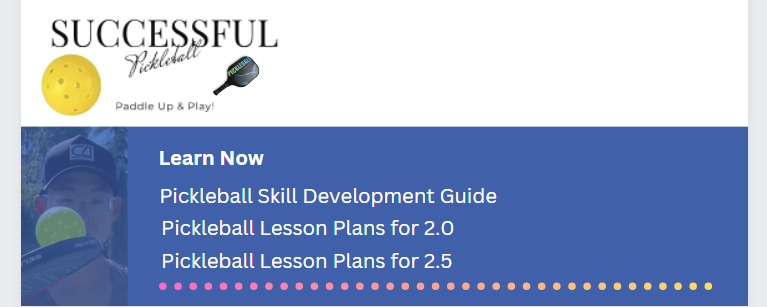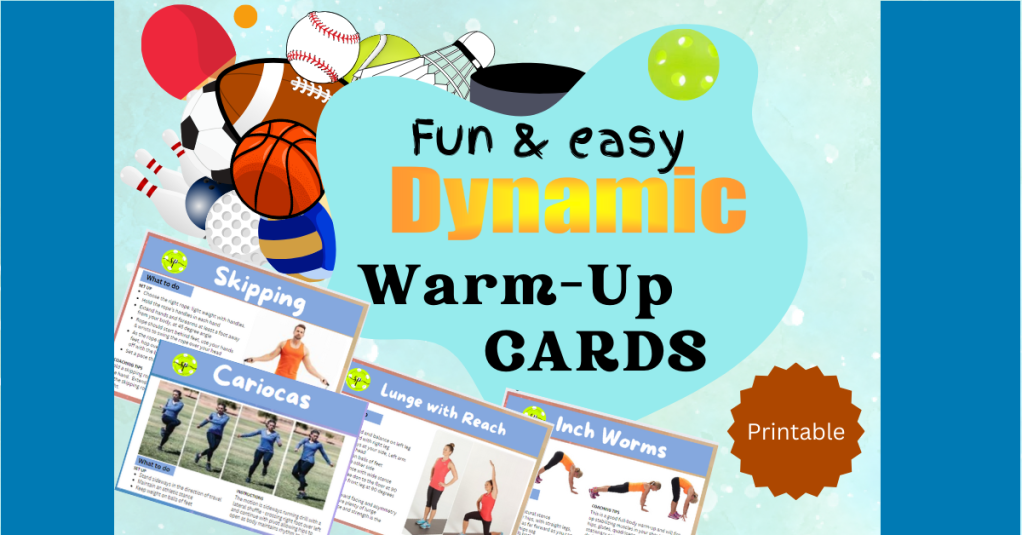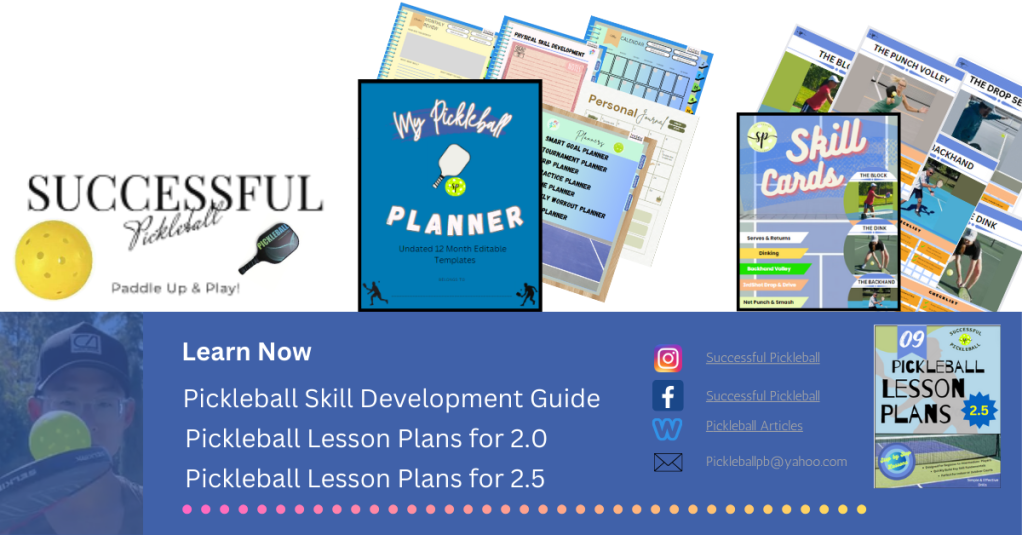COMMON TYPES OF INJURIES:
Blisters, sprains, strains, and falls do happen. The most common ailment in today’s beginner athletes is muscle imbalance. This can cause muscle tightness, altering the alignment of the pelvis and causing opposing muscle weakness. Strengthen weak muscle links and stretch the tight muscle links to restore the natural alignment of the spine/pelvis and eliminate imbalance.
INJURY PREVENTION:
Prevention is often the best defense against harm and reduces the incidences of injury. Be educated.
- Play in a safe environment,
- Follow an exercise prescription – whether self designed or through a professional,
- Know and stay within your limitations and potential risk factors,
- Assume responsibility for all activities you participate in,
- Ensure all workouts and training is safe and effective for you.
DEALING WITH INJURIES:
Proper techniques and optimum conditioning are still no guarantee that you will be injury-free during your pickleball journey, so it is important to recognize risks to injuries and deal with abnormal functions to muscles or joints. Never work through the pain and seek medical advice on limitations.
CLASSIFICATION OF INJURIES:
There are two classifications of injuries; Acute and Chronic:
ACUTE INJURIES: Sudden onset of pain, accidental, and can be the result of a single event. You may experience mild to moderate pain and it does not usually lead to permanent joint or muscle damage. Common examples include; muscle strains or ligament sprains.
CARE FOR ACUTE INJURIES:
Immediate attention to injuries must take place within the first 72 hours. Healing time is reduced with correct and early onset care. The best approach is RICE:
- R – Rest: allowing injury to heal without further aggravation
- I – Ice: reducing inflammation, slow swelling, support healing
- C – Compression: pressure applied will help with swelling
- E – Elevation: raise injured area, to help blood flow away from injury. Ideally, elevate area above the heart.
Causes of Chronic Injuries
CHRONIC INJURIES: Slow and gradual onset of signs and symptoms which may begin with sore muscles and progressively get worse. It is usually a result of gradual and continued overuse of one particular muscle group. Look for signs of mild discomfort that becomes painful after time. This type of pain can progress to severe and may lead to permanent joint or muscle instability and disability. Common areas of pain include the shoulder, hip, knee, and back.
Any repetitive activities. Chronic injuries are the result of muscle imbalance, poor posture, and improper movement or technique. Lack of exercise or compromised muscle and skeletal systems that are not strong enough to maintain repetitive activity. Overtraining without proper recovery time puts unnecessary stress on muscles and joints. Inappropriate recovery time. Improper footwear and sometimes the surface of the playing area may not have adequate support or cushioning.
CARE FOR CHRONIC INJURIES:
- Take care of acute injuries immediately to avoid the escalation into a chronic injury.
- Get an appointment to see your Doctor or a sports injury specialist to have a complete assessment completed. Injuries do not just simply go away.
- Follow your Doctors’ advice so you can integrate a fitness regimen with the rehabilitation of the chronic injury.
- Evaluate your training methods, training equipment, exercise or playing intensity, and exercise or playing frequency to prevent future disabilities as well as injuries.
INJURY PRACTICE:
If you have an injury, rest. Injury can be kept to a minimum by improving body mechanics and doing exercises that strengthen muscles. If you have a desire to keep active during an injury break, work on other aspects of your game, like, footwork drills if the injury is located in the upper body, or try focussing on the mental side of the sport, whatever you decide – take it easy until you are cleared by a physician to return to active play.
RETURN TO ACTIVITY:
It is very important to properly heal before returning to any sport after an injury. Overall, further injury and frustration may occur if you are not physiologically and psychologically ready to return to playing.
FULL RECOVERY GUIDELINES:
Most athletes resist any reduction in training or playing but it is so important for your overall health and well-being. Full Recovery means;
- 100% Range of Motion (R.O.M) and strength,
- Complete absence of swelling and pain,
- The ability to perform all your skills within pickleball sport.
HEAT STRESS DISORDERS:
Heat cramps, heat exhaustion, and heat-stroke. Acclimatize to the extremes that you may experience in competition play (even friendly games can be stressful), wear proper clothing, and hydrate adequately.
HEAT AND SUN:
If you play inside with limited air conditioning or outdoors in the direct sun – overheating is a risk factor that can impact health with grave complications.
PRO-TIP
SUNSCREEN:
Remember to protect your skin and eyes when playing outdoors. Wear a hat, sunglasses with ultraviolet block, and sunscreen.
KEY TO SUCCESS:
Rest is essential to recovery and patience with an injury may mean you can find other ways to exercise or enjoy pickleball that will not perpetuate the injury. Try refereeing, or coaching others. Take a break from the competition.
Warm Up before any Activity
Please consider subscribing to our blog for more great pickleball content and make sure to follow us on Facebook. Grab your dynamic warm-up exercise eBook as well, happy training!












































One response to “Avoiding Injuries”
[…] 26, 2024 ProTips Pickleball Elbow 8 Ways to PREVENT Sport Injury Avoiding Injuries 10 Common Types of […]
LikeLiked by 1 person